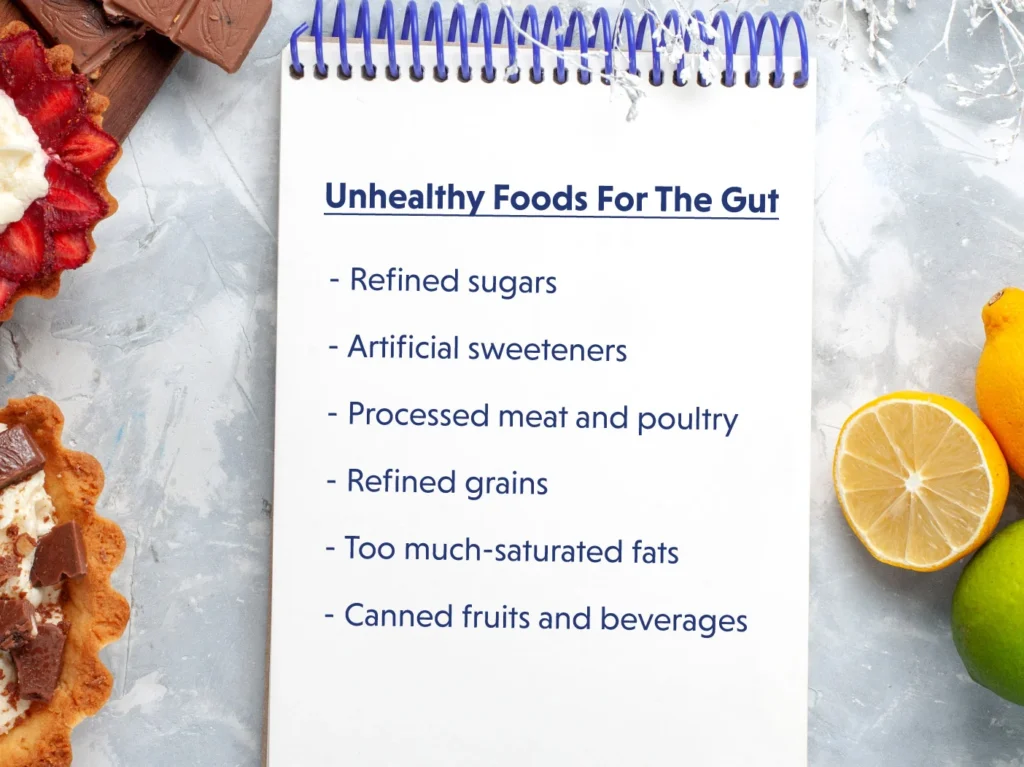Gut health is a trendy topic these days and one we should pay attention to. Numerous types of research have also made us realize how much our gut impacts our overall well-being. Learning more on this topic is significant not only for those dealing with ongoing gut issues but for those who don’t as well.
For those who are not much aware of the term “gut”, here is a brief introduction. The gut is the gastrointestinal tract, which processes the ingested food until it is properly digested and passed out of the body. Therefore, your gut is constantly in contact with the external environment, toxins, and pathogens. These factors can easily disrupt the homeostasis or balance maintained in the gut. The most common factor impacting this equilibrium would be the lack of variety in your diet and the overconsumption of unhealthy options like foods with added sweeteners.
The foundation of a healthy gut is eating wisely while also learning to keep your mind relaxed. The following statements are indicative of individuals suffering from gastrointestinal conditions:
- “While traveling, I always carry antacids in my purse.”
- “I never put any food item in my mouth without enquiring about its ingredients.”
- “ My stomach feels heavy after every meal.”
- “I stay awake late at night due to heartburn and acid reflux.”
- “I’m afraid I will have to rush to the toilet when I will be in the office.”
If you are also experiencing the same kind of problems in day-to-day living, be attentive towards your gut health. If keeping track of what you are eating seems difficult, you can consult a doctor to refer you to the correct kind of diet plan to follow. Following a diet doesn’t always focus on weight loss. It can be a gateway to improving your eating habits, eliminating risk factors, and leading a more active lifestyle. Therefore, we are going to discuss all the gut-friendly food groups in detail and have a better understanding of how and when we can include them in our diet plan to keep the gut in equilibrium.
GUT FRIENDLY FOODS
Gut-friendly foods are the right category of foods to eat to keep your gut healthy and properly functioning. However, different individuals would need them in different proportions keeping In mind any food allergies or food intolerances.
- Plant foods
Including more plant-based foods in the diet plan can keep your gut always on the front. Studying the most well-known, easy-to-follow, Mediterranean diet will give you a list of the range of fibers and nutrients it includes. Try and make your plate filled with variety and colors, consisting mostly of plants, preferably organic.
The fiber present in these foods acts as roughage to keep us satisfied for a long time and keep our cholesterol levels within a healthy range. Other than this, a type of fiber ingested by your gut microbes called prebiotics is the fuel for them.
Some plant foods are also rich in polyphenols which protect the human body against diseases. Although all fruits and vegetables are good for your intestine, there are some high in fiber content, such as oats, garlic, leeks, beans, whole grains, lentils, asparagus, bananas, and artichokes. Some more varieties of fibers gaining attention these days are sprouted seeds like chia seeds, flax seeds, sunflower seeds, and more.
How much to eat and why?
A person who consumes about 2000 calories a day should take in 3 cups of assorted vegetables and 2 cups of fruits daily.
- Fermented foods
Fermented foods are live active cultures containing bacteria, which are good for your gut and are known as probiotics. Therefore, they will add to the number of beneficial bacteria already present in your gut. Although fermented foods taste sour because of the undergoing process, they are different from quick pickled foods with added vinegar. So, you must opt for naturally fermented foods like yogurt, kefir, kombucha, and sourdough.
How much to eat?
There are no specific recommendations for its daily intake, but we will give you some tips to include them easily in your diet plan.
- Begin your day with a parfait or start your morning with yogurt.
- Add plain yogurt as a key ingredient in salad dressings, dips, and cold sauces.
- Take a kombucha break after your lunch.
- Vitamin D-rich foods
Vitamin D is an essential nutrient and is naturally present in the sunshine, but most people in the United States are vitamin D deficient as they are mostly deprived of exposure to the sun. As per studies conducted, this category of vitamins helps boost the growth of healthy gut bacteria, and its amount is often tested in your blood samples if you are suffering from gastrointestinal tract infection. Other than the gut, it also supports your nervous and immune systems and is good for your bone health. Most vitamin D-rich foods are salmon, trout, sardines, eggs, and mushrooms.
How much to eat?
Ages 19-70: 15 micrograms per day
Ages 70+: 20 micrograms (assuming you meant over 70, so I added a + sign for clarity)
- Omega-3 rich foods
Research conducted on omega-3 fatty acids has confirmed its link with improved gut diversity. This essential nutrient is advantageous to other health issues like lowering inflammation, treating depression, and improving heart health. The foods which are good sources of omega-3 fatty acids are wild salmon, mackerel, sardines, anchovies, and mussels. They are also present in some plant sources such as walnuts, flax seeds, chia seeds, seaweed, spinach, and broccoli.
How much to eat?
Age 18+ is 1.1 – 1.6 grams, while the American heart association recommends eating two servings of fish a week, i.e. 3-4 ounces.
UNHEALTHY FOODS FOR THE GUT

- Refined sugars
- Artificial sweeteners
- Processed meat and poultry
- Refined grains
- Too much-saturated fats
- Canned fruits and beverages
BREAKFAST
- If you are hungry when you wake up, kick start your day with a prebiotic-rich gut-nurturing breakfast. The prebiotic fibers will increase the diversity of your gut, along with lowering your blood sugars.
- Add nuts and seeds as they are plant-based protein with lots of fiber, keeping you full for a long. Eggs are other excellent sources of protein if you are a vegetarian.
- Opt for wholegrain-based cereals providing you with more than 2 grams of fiber per serve.
- Try to choose whole, unprocessed foods from each of the five categories – fruits, vegetables, grains, dairy, and protein-rich foods.
LUNCH AND DINNER
- An easy way to build a balanced diet for your meal is to favor a healthy gut, including foods from at least three categories mentioned here: fruits, vegetables, grains, proteins, and dairy-rich foods. Hence, taking a salad would be a good option as it fits all food groups in one meal. For instance, a salad made from spinach, orange, cooked brown rice, boiled eggs and cottage cheese includes all the food groups.
CONCLUSION
Revamping your diet to help your gut and improve your metabolism can do wonders. So, be mindful of including almost all of the gut-friendly foods in your diet plan. A diversified gut will further improve your weight plan, skin, immunity, energy, and even your mood.
Download the JoyScore app to uplift your health and mood while learning more beneficial tips!
Download on the Appstore
Get it on Google Play



